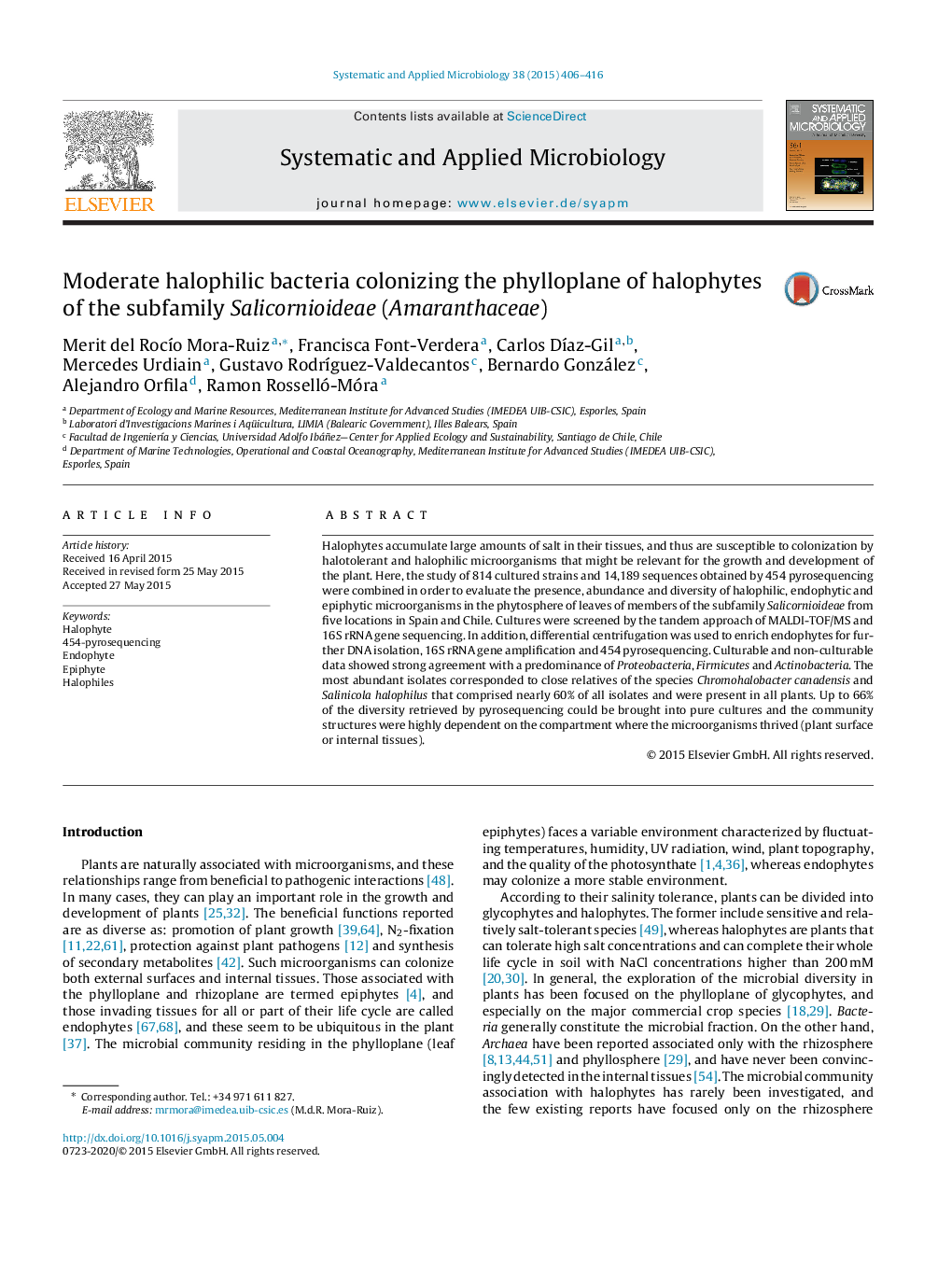| Article ID | Journal | Published Year | Pages | File Type |
|---|---|---|---|---|
| 2062921 | Systematic and Applied Microbiology | 2015 | 11 Pages |
Halophytes accumulate large amounts of salt in their tissues, and thus are susceptible to colonization by halotolerant and halophilic microorganisms that might be relevant for the growth and development of the plant. Here, the study of 814 cultured strains and 14,189 sequences obtained by 454 pyrosequencing were combined in order to evaluate the presence, abundance and diversity of halophilic, endophytic and epiphytic microorganisms in the phytosphere of leaves of members of the subfamily Salicornioideae from five locations in Spain and Chile. Cultures were screened by the tandem approach of MALDI-TOF/MS and 16S rRNA gene sequencing. In addition, differential centrifugation was used to enrich endophytes for further DNA isolation, 16S rRNA gene amplification and 454 pyrosequencing. Culturable and non-culturable data showed strong agreement with a predominance of Proteobacteria, Firmicutes and Actinobacteria. The most abundant isolates corresponded to close relatives of the species Chromohalobacter canadensis and Salinicola halophilus that comprised nearly 60% of all isolates and were present in all plants. Up to 66% of the diversity retrieved by pyrosequencing could be brought into pure cultures and the community structures were highly dependent on the compartment where the microorganisms thrived (plant surface or internal tissues).
